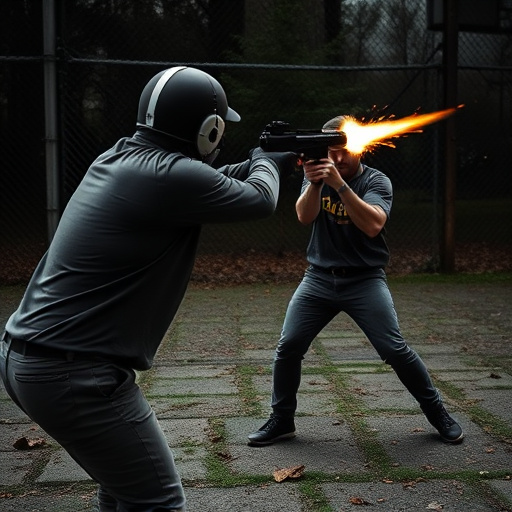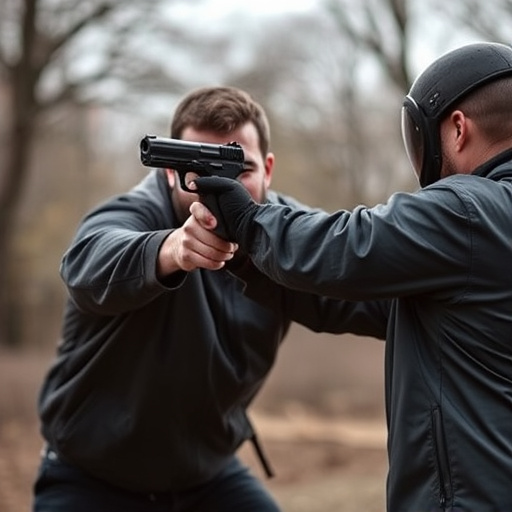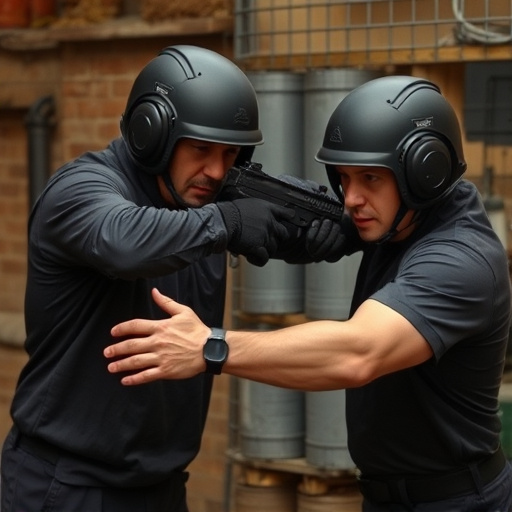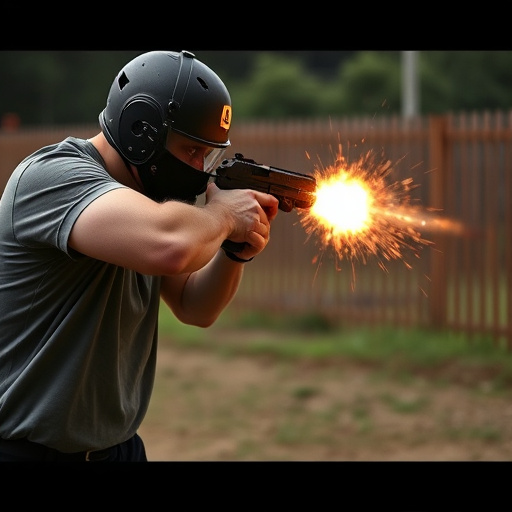Female runners seeking self-defense options need best stun guns tailored to their needs. Key factors include compact design, powerful voltage (50,000-100,000), quick trigger, adjustable settings, waterproof construction, and built-in alarms/LEDs. Reputable manufacturers test stun guns rigorously for effectiveness, ensuring temporary incapacitation of attackers. Understanding muscle incapacitation duration empowers runners to make informed self-defense decisions.
“In today’s world, personal safety is paramount, especially for women runners facing potential threats. Understanding the muscle incapacitation duration from stun guns is crucial for effective self-defense. This article delves into the science behind stun gun effectiveness, exploring factors unique to female runners. We present a comprehensive guide on choosing the best stun guns tailored to their needs, highlighting key features. Additionally, we discuss essential testing and safety protocols, ensuring responsible ownership and use.”
- Understanding Muscle Incapacitation from Stun Guns
- Factors Affecting Stun Gun Effectiveness for Women Runners
- Best Stun Guns for Female Runners: Key Features to Consider
- Testing and Safety Protocols for Stun Guns in Self-Defense
Understanding Muscle Incapacitation from Stun Guns

Understanding Muscle Incapacitation from Stun Guns
When considering self-defense options, particularly for female runners who face unique challenges while navigating their surroundings, understanding muscle incapacitation duration from stun guns is crucial. Stun guns, also known as electronic control devices (ECDs), use an electric current to disrupt the body’s nerve impulses, causing temporary paralysis and disorientation. The effectiveness of a stun gun lies in its ability to render an assailant incapable of fighting back for a brief period, providing precious time for the runner to escape or seek help.
The muscle incapacitation duration from stun guns varies based on factors such as the device’s voltage output, the area targeted, and the individual’s size and physical condition. Best Stun Guns for Female Runners should be chosen with these variables in mind, ensuring a powerful enough jolt to disable an attacker while being compact and easily accessible for quick deployment during emergencies.
Factors Affecting Stun Gun Effectiveness for Women Runners

When it comes to self-defense, women runners often seek effective yet compact tools that can incapacitate attackers quickly. Stun guns, also known as electronic control devices (ECDs), offer a non-lethal option for personal safety. However, several factors influence their effectiveness, especially when considering the unique needs of female runners.
One key consideration is the stun gun’s power and range. Women who run in diverse environments, from well-lit city streets to secluded trails, may require devices with adjustable settings and longer ranges. Additionally, weight and size matter; lighter, more discreet models are preferable for runners who want a tool they can easily carry without hindering their mobility. Choosing the best stun guns for female runners involves selecting devices that balance power, range, and compactness while accounting for the specific challenges women might face during their runs.
Best Stun Guns for Female Runners: Key Features to Consider

When it comes to choosing the best stun guns for female runners, several key features merit consideration. Firstly, look for compact and lightweight designs that easily fit in a purse or running belt. This ensures ease of carrying during your runs without adding significant bulk. Secondly, power output is crucial; opt for stun guns with 50,000 to 100,000 volt ratings, which are powerful enough to incapacitate an assailant temporarily.
Additional features like a quick-trigger mechanism and adjustable voltage settings can provide added convenience and control. Waterproofness is another valuable trait, as it allows for use in various environments without compromising performance. Lastly, consider stun guns with built-in alarms or LED flashlights, which serve as additional deterrents and emergency tools during runs in low-light conditions.
Testing and Safety Protocols for Stun Guns in Self-Defense

When it comes to self-defense, especially for female runners concerned about personal safety, understanding the muscle incapacitation duration of stun guns is key. However, beyond the numbers and specifications, ensuring the safety and effectiveness of these devices through rigorous testing protocols is paramount. Reputable manufacturers follow strict guidelines, employing various testing methods to simulate real-world scenarios. These tests not only verify the stun gun’s ability to render an attacker temporarily incapacitated but also assess factors like trigger pull, voltage output, and the overall reliability of the device under different conditions.
For runners seeking the best stun guns tailored for their needs, these safety protocols offer peace of mind. Knowing that the weapon has undergone extensive testing ensures its dependable performance when every second counts. Moreover, understanding muscle incapacitation duration allows users to make informed decisions about personal protection, recognizing that a successful self-defense strategy relies not only on the right tool but also on thorough preparation and understanding of its capabilities.
The ability of stun guns to incapacitate muscles effectively is a critical consideration, especially for female runners seeking self-defense options. Understanding how these devices work and the factors influencing their performance can empower individuals to make informed choices regarding personal safety. Among the key findings, testing protocols reveal that certain stun guns outperform others in terms of muscle immobilization duration, with some models offering extended protection. When selecting a stun gun, focusing on power output, probe length, and high-quality construction ensures maximum effectiveness for women runners looking to defend themselves against potential threats.
